The JetBlack Victory is a product announcement that needs more room in a post title. If I could have used all the words in the title, it’d probably say say: “First Look at JetBlack Victory, the $399 Direct Drive Smart trainer with WiFi, unseen Zwift Cog 2.0, Race Mode, Wired-USB connectivity option, the first 3rd party ‘Zwift Ready’ trainer, and more!”.
But alas, I can’t have that. Thus, you got the shortened version I settled on up above.
As always, JetBlack is pushing the boundaries of incredibly priced trainers. They did it years ago with the JetBlack VOLT series, then again with the Zwift Hub One (remember the Zwift Hub was essentially a JetBlack Volt rebranded), and now, they’re pushing the limits of that again with the JetBlack Victory. Albeit, perhaps pushing the product naming limits a bit too. Still, do *NOT* mistake this for some knockoff budget trainer. The company has long ago proven it can be slotted up against the best of them – both in terms of specs, but real-world usage.
Before we go too much deeper though, note that the unit seen above/below is a pre-production one with a few components still being finished. Thus, this is purely a first-look post, I’ll do a final in-depth review later this summer with final hardware and software. As always, that’ll cover all the usual bits in-depth – like accuracy, responsiveness, and the litany of features JetBlack is including with the trainer.
With that, let’s dive into it.
The Tech Specs:
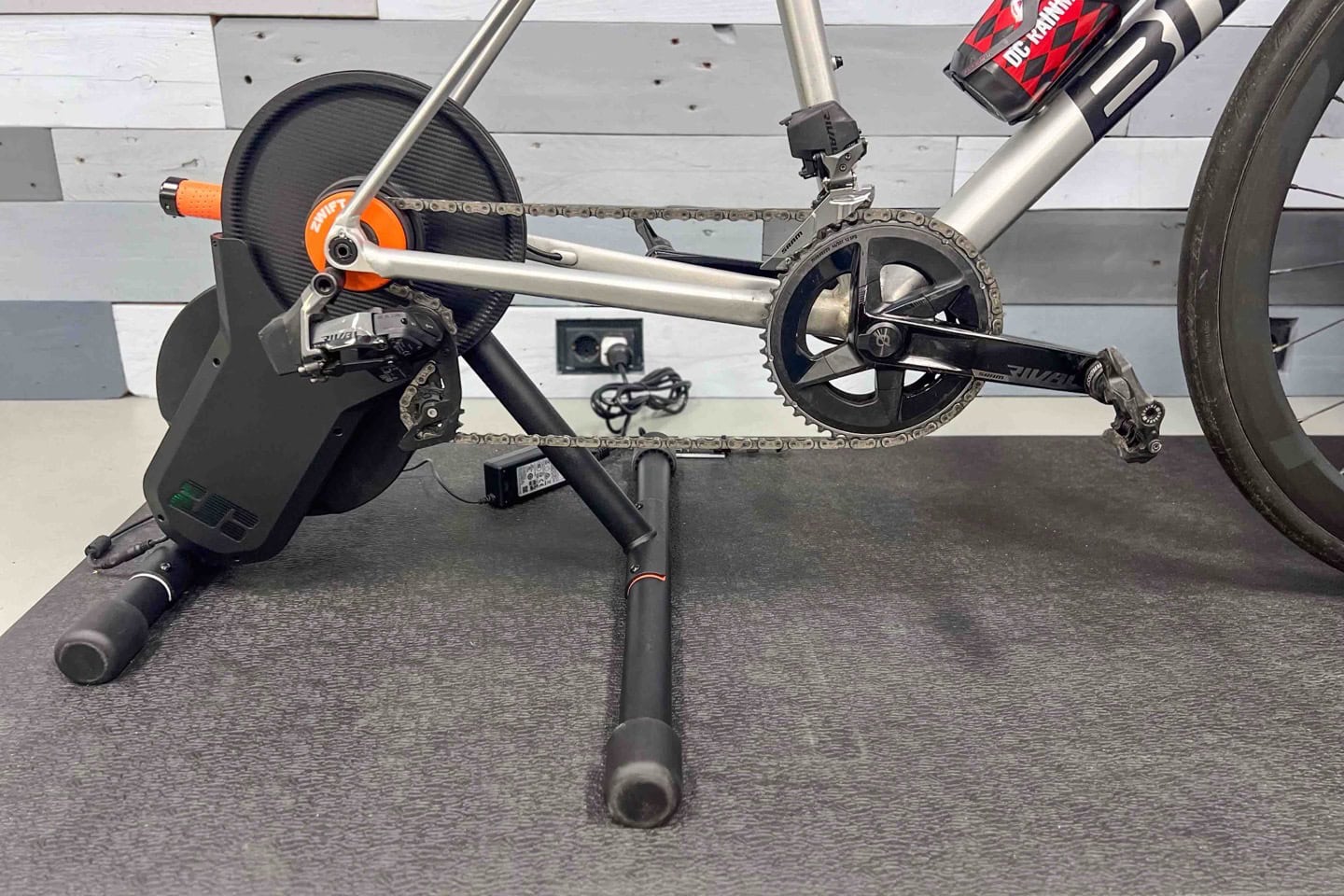
Here’s the quick and straight forward version of the specs of the JetBlack Victory. In many ways, the are somewhat similar to the previous JetBlack VOLT, except this is an entirely different beast internally (more on why in a second):
– Direct drive trainer: This means you remove your rear wheel
– Flywheel: It has a flywheel weight of 4.7kg (same as before)
– Cassette: Zwift Cog V2 virtual cassette, compatible with 8-12 speed bikes, though practically compatible with any bike/chain that you can physically mount on the trainer (axle-wise).
– Sound: Essentially silent. Only the sound of your drivetrain is heard.
– Handle: Yes, and cleverly wrapped in orange bar tape.
– Protocol Compatibility: ANT+ FE-C, ANT+ Power, Bluetooth Smart Trainer Control, Bluetooth Smart Power (everything you need). However, note that while fully compatible with other apps, you can *ONLY SHIFT* with Zwift. So, this will work perfectly fine in ERG mode on TrainerRoad, but you’ll be going nowhere fast on Rouvy or IndieVelo without shifting. More on that later.
– WiFi: Yes, Direct Connect to all apps via WiFi
– USB Connectivity: Yes, Direct Connect via USB
– Zwift Race Mode: Yes, 10 Hz
– Unique Party Trick: Can rebroadcast your heart rate sensor within a single channel, ideal for Apple TV Zwift users (who are Bluetooth channel limited)
– App Compatibility: From a protocol standpoint, anything, but from a practical standpoint, just Zwift for simulation mode due to the aforementioned shifting limitation.
– Skewer Compatibility: All the skewers and adapters you could ask for: Road 130mm, 135mm, 142x12mm, 148x12mm
– Max Incline: 16% simulated grade
– Max Wattage: 1,800 watts resistance
– Stated Accuracy: < +/-2.0%, auto-spin down calibration
– Built-in odometer: Tracks your distance via the JetBlack app, for all trainer rides
– Power Cable Required: Yes, power block compatible with 100-240v
– Pricing and Availability: $399USD, €449, £399, and $749AUD
First up on some of the notable things is that this is the first 3rd party branded “Zwift Ready” trainer. Prior to this, it was trainers that Zwift themselves were releasing (without any ‘Zwift Ready’ tag). That included things like the original Zwift Hub (ironically made by JetBlack), as well as the new Zwift Hub CORE ONE (made by Wahoo Fitness).
But Zwift has opened up the Zwift Ready program to essentially by trainers that have the Zwift Cog cassette + Click virtual shifting. Also notably, this is the first trainer, Zwift or otherwise, to showcase the new Zwift Cog V2. That’s got a new indexing system to reduce noise further, but ensuring perfect alignment (aka indexing) with your specific rear derailleur. It’ll soon become the standard Zwift Cog version shipped, later this summer.
Finally, JetBlack sent over a list of nearly a dozen changes compared to the VOLT, designed to improve various things. This included everything from new bearings, to new pulley alignment, to increased internal airflow, upgraded axle adapters, and other electrical changes – ultimately resulting a 15*C lower temperature internally.
With that, let’s dig a bit deeper.
Initial Impressions:
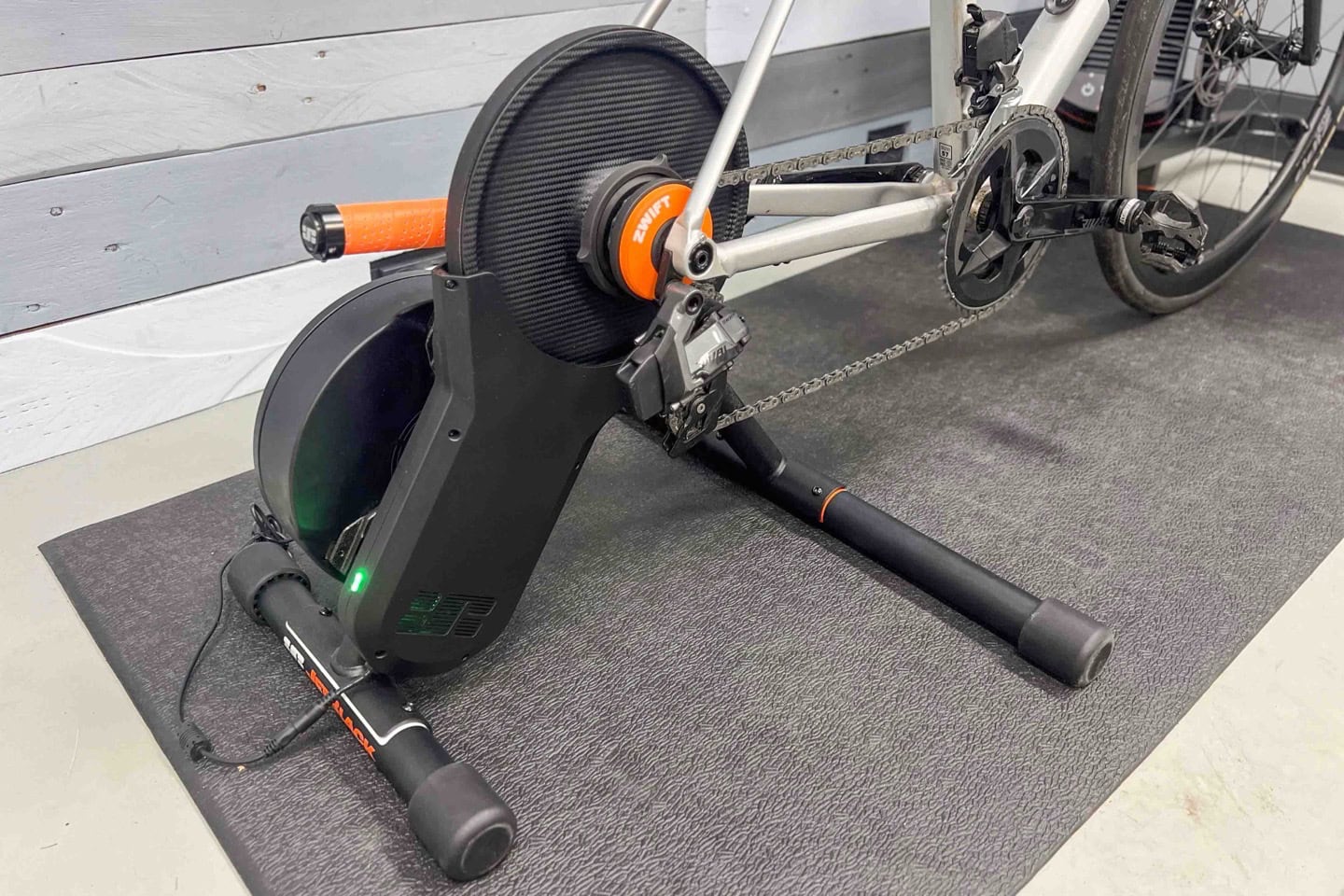
First up, we’ve got the parts in the box. Much like existing JetBlack trainers, you’ll basically just attach the legs. Two bolts per leg and you’re done. Plus, any swap page of the axle adapters you need for your specific bike. In addition to what’s shown below, the final production box will include the Zwift Click buttons (seen later, I had a few sets already):
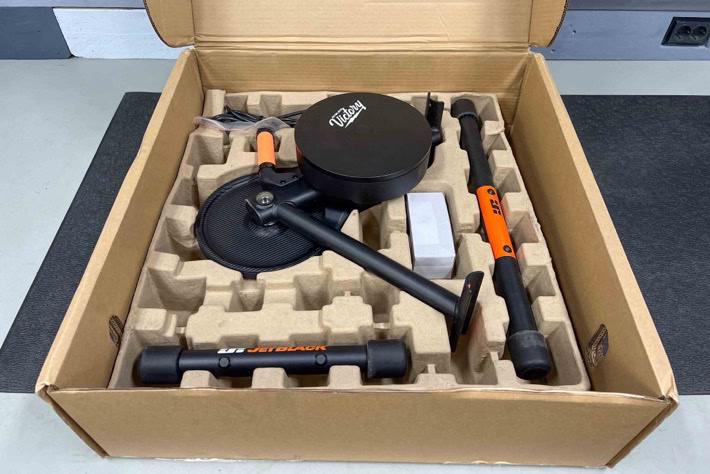

And with that, you’re assembled. I’ve gotta hand it to JetBlack, if you’r a fan of orange, this trainer ticks almost all the boxes. You’ve got Zwift orange on the Zwift Cog (which is made by Zwift), then you’ve got JetBlack orange on the trainer itself, and finally, you’ve got a not-quite-yet-matching orange for the handlebar tape on the trainer handle:

JetBlack says that come final production unit, all shades of orange on the box will be matched to the Zwift orange, Pantone 165.
In any event, I think the bar type choice is amazing. Such a good tweak on the standard trainer handle that both makes sense, as well as is on-brand for a cycling product. I’m now tempted to bar tape the staircase handlebar in the DCR Cave.

You’ll notice the unit has the new Zwift Cog V2.0 on it. That cog has a new indexing feature that essentially lets you get the gear positioning *just right* to further reduce any noise or alignment imperfections.

As for the rest of the trainer, you’ve got a design that’s not terribly unlike the previous (and very successful) VOLT trainer (which again, became the Zwift Hub). Though, JetBlack says they made some internal changes to be a bit more different than the nuances of Wahoo’s patents (Wahoo previously dismissed it’s case against JetBlack that had been concurrent with it’s case against Zwift, before Wahoo/Zwift ultimately made up). Realistically, the judge had signaled it’s unlikely some portions of the Wahoo patent would have held up, but these internal design changes theoretically remove any potential issues there – including switching from a flywheel-style design to more of a ‘disc’ for weight. Only the thin left portion (which is labeled ‘Victory’, below), actually spins. The rest is fixed (as seen in the video).
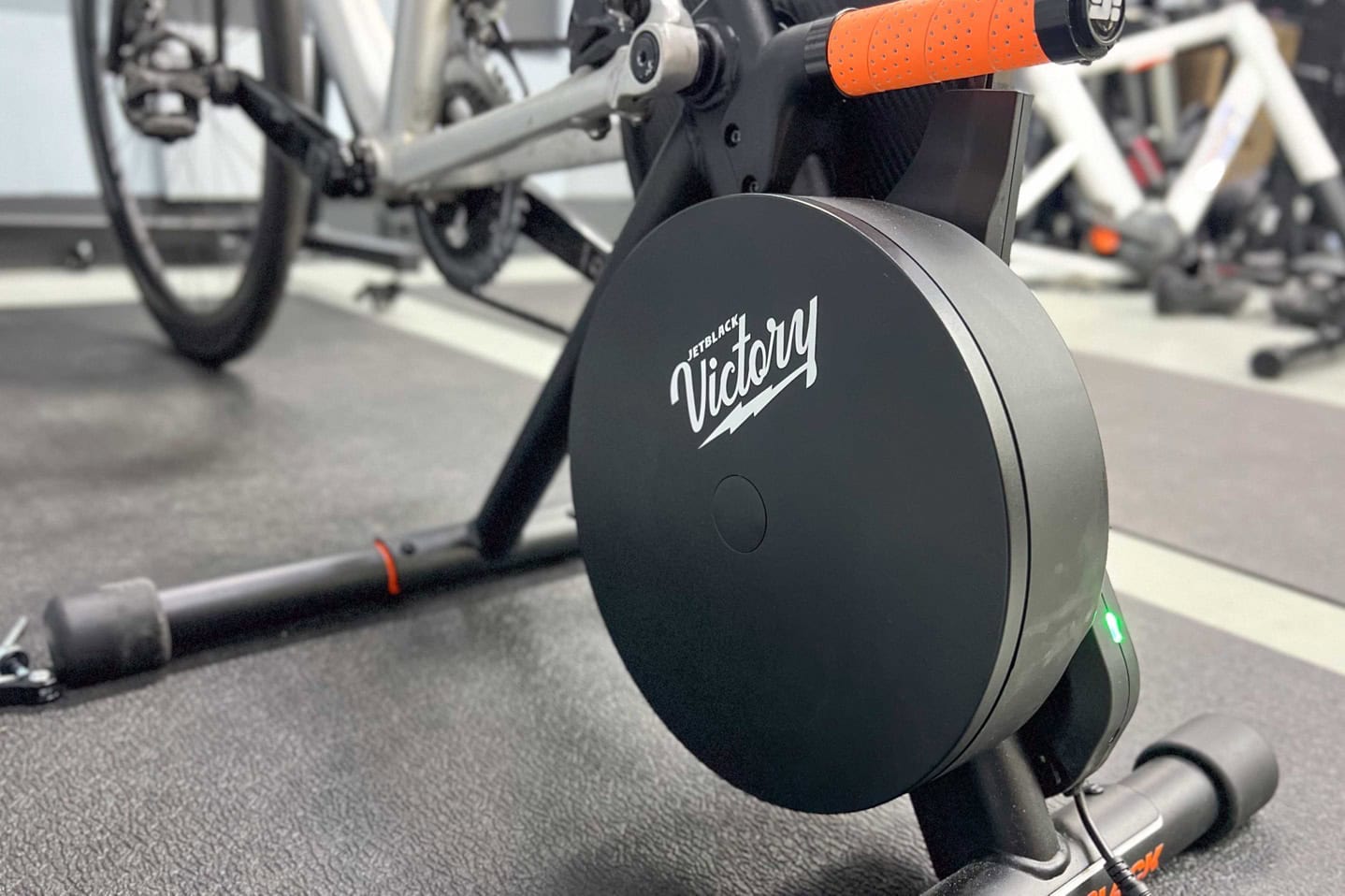
Next, the package will come with the Zwift Click, which is the remote shifter piece (same as other Zwift Cog units). In my case, the pre-production unit didn’t have that, but no biggie, I’ve got plenty of them. Alternatively, you can use Zwift Play too.

In any event, here’s it pairing up to Zwift – both the Zwift Click, as well as the JetBlack Victory, via Bluetooth on Bluetooth:

Except wait…a key new feature of the new JetBlack Victory is the built-in WiFi for Direct Connect (aka DirCon). Thus, here’s it shown that way after I configured the WiFi network with the JetBlack app:
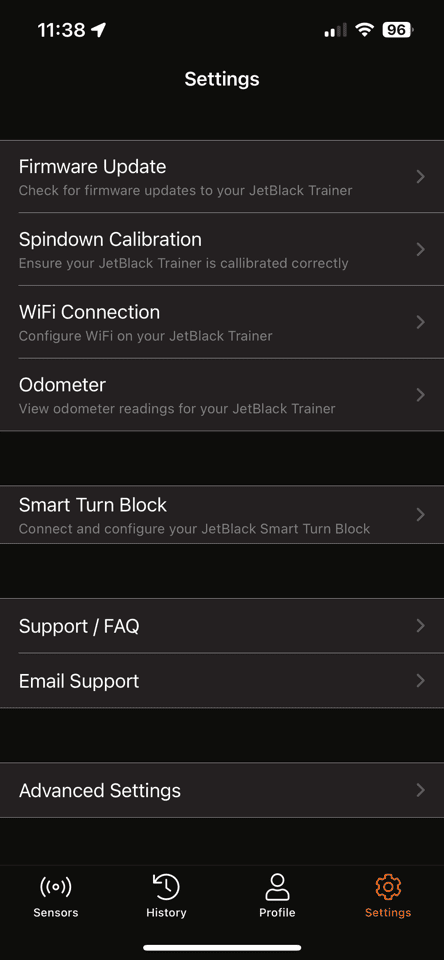

So for now, I’ll use that for my first ride. Off to Zwift I went, ready to ride. In this case, I just selected a route with various gradients to ride. This would mean I’d use the Zwift Click for shifting to change virtual gears.
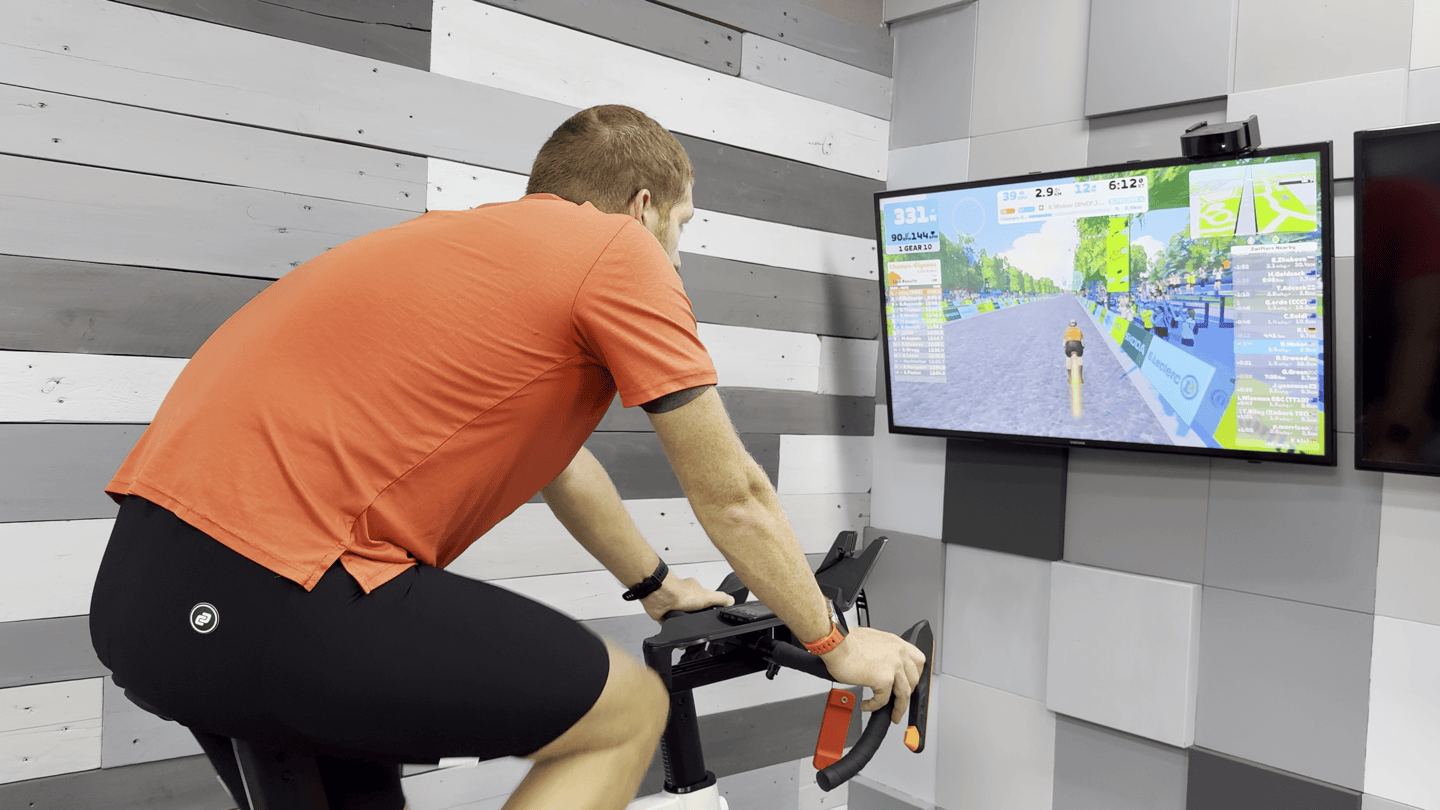
All of that worked just fine, and just like the existing Zwift Hub and Wahoo KICKR CORE with the Zwift Cog. In terms of road feel it basically likes an existing JetBlack VOLT, or a Wahoo KICKR CORE. Likewise, in terms of audible noise, it pretty much silent, save the typical drivetrain/chain noise. But, it’s definitely than the COG V1 version.
Of course, the unit also has:
– Heart Rate Bridging: This means that on Apple TV, you don’t run out of connections, as Apple TV has two concurrent Bluetooth Connections (plus the remote). So this allows the trainer to channel the heart rate data as a single trainer/HR/power/cadence connection, then the Zwift Click as the second connection.
– Zwift Race Made: 10hz (10 times/second) data update rates.
I’ll dig into all that during my final in-depth review, but I wouldn’t expect that to be any different. Likewise, JetBlack warned prior to shipping the unit that the unit I was sent was not fully calibrated with the final calibration rig/data, and thus there were some known accuracy items still outstanding before final production units start shipping (namely peaking on sprints). They didn’t express much concern about those, and given JetBlack’s history in this area in producing quite accurate trainers, I’m not super concerned about them either yet. Here’s a quick snippet of a short ride I did this morning with the most recent beta firmware hot off the press from a few hours prior:
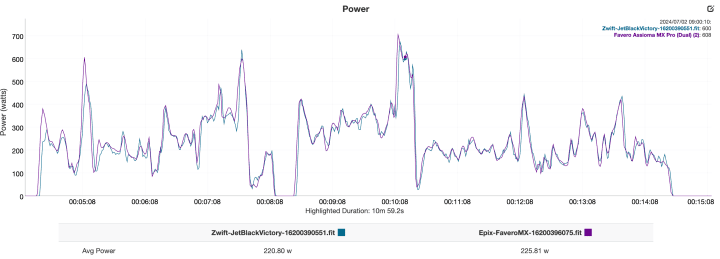
Now, last but not least – one final tidbit of fun: Using it with the Zwift Frame from the Zwift Ride setup. As Zwift noted when it launched the Zwift Ride, the intention is that the Zwift Frame becomes available to purchase as just the Zwift Frame later this summer (versus the whole Zwift Ride trainer package). That benefits existing Wahoo KICKR CORE, KICKR V6, and Zwift Hub owners, that want to get the Frame. But it also benefits all the future ‘Zwift Ready’ trainers, starting with the JetBlack Victory, that can be slotted under the Frame, just like such:
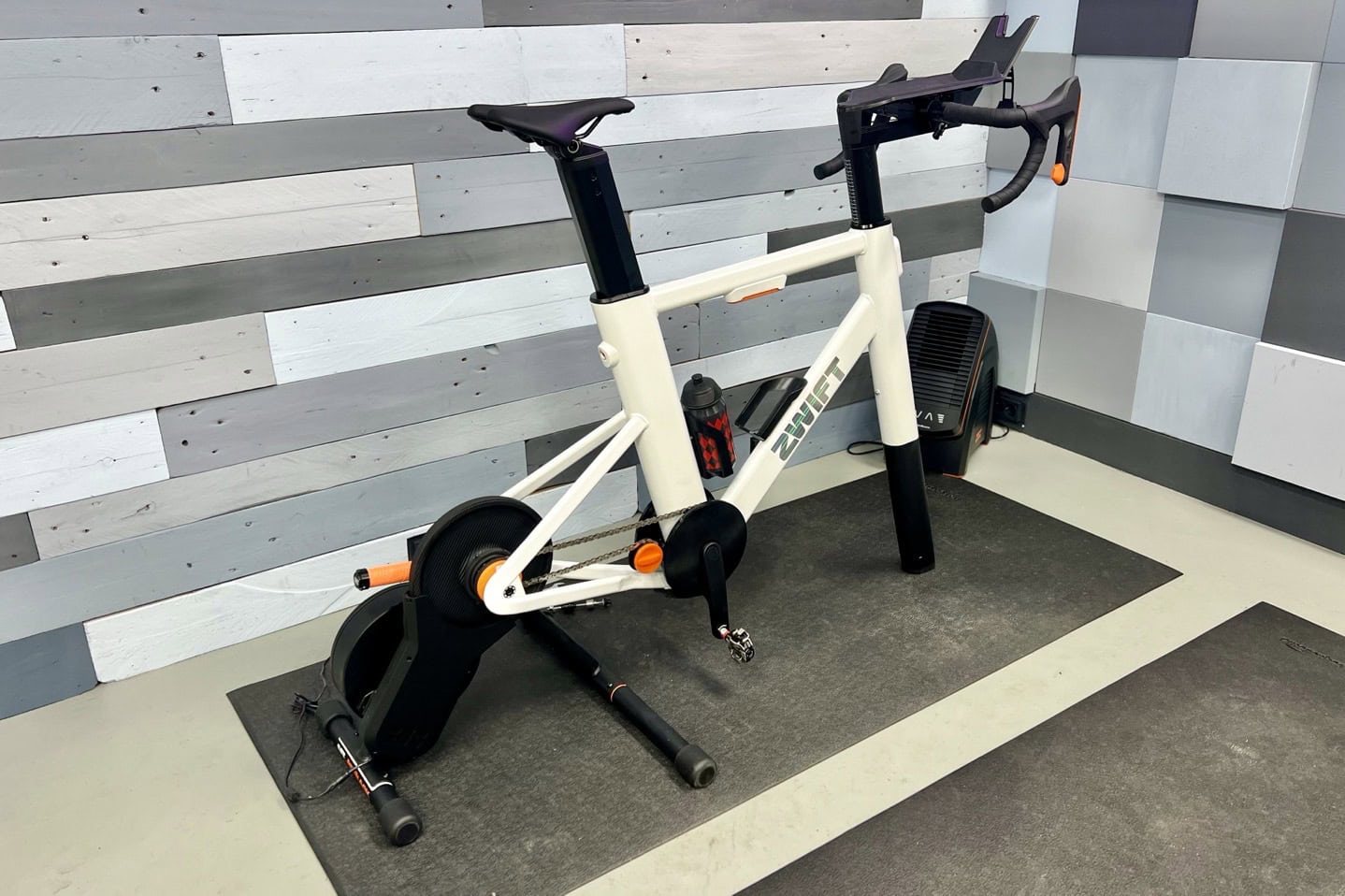
In this case, I was able to shift just fine with the Zwift Frame’s handlebar shifting package, controlling the virtual gearing of the Zwift Cog on the JetBlack Victory.

It should be noted that JetBlack says if you want to throw a regular 11-speed cassette on there, for non-Zwift usage, you can easily do so. The built-in free hub supports that without anything special. Like many other trainers, if you want to put a 12-speed cassette on there, you’ll need to buy an XDR free hub accessory ($43).
Wrap-Up:
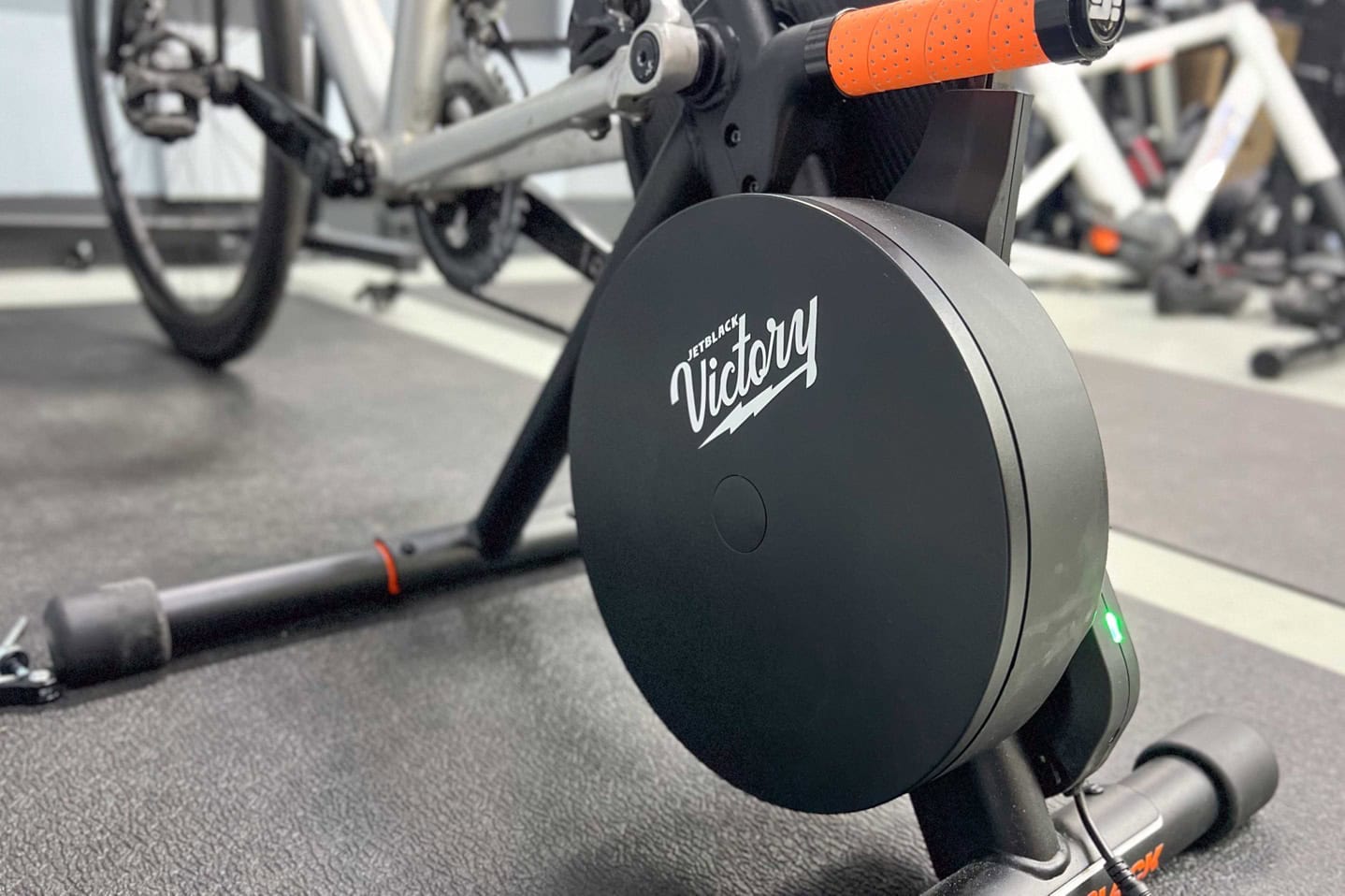
Like the Britney Spears song, JetBlack has basically done it again. They’ve drastically lowered the price entry bar for a high quality smart trainer with more features than any of their competitors at basically half the price. While competitors often like to use the term “race to the bottom” when it undercuts their pricing, the simple reality is that JetBlack has demonstrated over the last 6+ years that their hardware and software quality is just as good as their competitors. After all, Zwift picked them as their launch hardware partner for their own Zwift Hub, and then now again to be the first 3rd party company leveraging the Zwift Ready program.
Of course, the proof is still in the pudding. JetBlack will need to wrap-up pre-production and move to production, something they say will happen in the next couple weeks, with production units starting to arrive Australia in late July, and then the rest of the globe by early September. They say by time October rolls around, they’ll be found in various big box stores in North America and Europe, Amazon, and various other retailers.
Thus, at some point along the way, probably sometime August, I’ll drop a final in-depth review, once I’ve got a final production unit and put some mileage on it. Assuming they can deliver the same performance as the JetBlack VOLT V2 from which this is built atop, this will be an exceptionally difficult trainer to top from a pricing standpoint.
Thanks for reading!

0 Commentaires